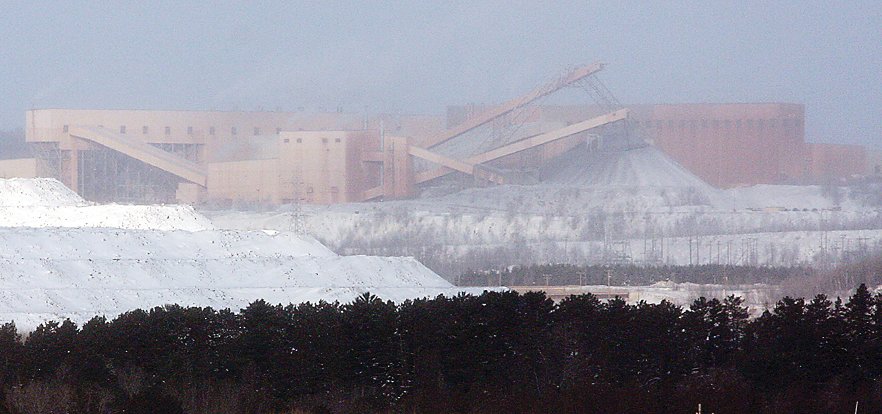Support the Timberjay by making a donation.
Minntac seeks weaker permit for tailings discharge
REGIONAL— U.S. Steel is seeking a permit modification for its Minntac tailings facility north of Virginia, that would eliminate the regulation of a number of pollutants that are covered in its …
This item is available in full to subscribers.
Attention subscribers
To continue reading, you will need to either log in to your subscriber account, or purchase a new subscription.
If you are a current print subscriber, you can set up a free website account and connect your subscription to it by clicking here.
If you are a digital subscriber with an active, online-only subscription then you already have an account here. Just reset your password if you've not yet logged in to your account on this new site.
Otherwise, click here to view your options for subscribing.
Please log in to continue |
Minntac seeks weaker permit for tailings discharge
REGIONAL— U.S. Steel is seeking a permit modification for its Minntac tailings facility north of Virginia, that would eliminate the regulation of a number of pollutants that are covered in its current water discharge permit.
The request, submitted Aug. 24, comes in the wake of a decision by the Minnesota Pollution Control Agency to change the standards for class 3 and class 4 waters by eliminating numeric limits for a number of water quality parameters, including total dissolved solids, chlorides, hardness, and specific conductance. The Minntac facility has regularly exceeded numeric limits for most of those parameters for years, but with the change in the rules—which the MPCA approved earlier this year— it appears the company is no longer required to meet the standards as written in their current permit.
The MPCA said the changes in the class 3 and 4 rules were intended to provide “a more nuanced, localized approach to protecting water quality” as well as greater flexibility in creating permits. The decision was strongly backed by the mining industry and Iron Range cities, many of which wrote letters in support of loosening regulations on dischargers of industrial pollutants.
The permit modification, if approved by the MPCA, would eliminate regulation of the above-mentioned pollutants on extensive seepage from the tailings facility, which directly impacts both the Dark and Sandy rivers. The Sandy River is a tributary of the Pike River, a major source of water for Lake Vermilion.
Native tribes and environmental groups had opposed the change in the Class 3 and 4 rules, arguing that the MPCA was, in effect, deregulating the mining industry by eliminating the only numeric water quality standards in Minnesota rules. MPCA officials dismissed those charges at the time, yet the permit modification now being requested by Minntac reveals the degree to which the MPCA’s action may have cleared the way for companies like U.S. Steel to forestall basic monitoring, much less clean-up, of their pollution.
“U.S. Steel is attempting to remove all accountability for direct surface water pollution from the tailings basin,” said Paula Maccabee, legal counsel for Duluth-based Water Legacy, which has pushed the MPCA to require a clean-up of the Minntac facility.
Minntac’s push for deregulation of its pollutants could still face hurdles from the courts. According to Maccabee, the federal Environmental Protection Agency has yet to sign off on the changes to class 3 and 4 rules that the MPCA approved earlier this year. The state agency can’t implement those changes without the federal approval, said Maccabee.
At the same time, U.S. Steel appears to be hoping that its recent installation of a seepage collection system on its Dark River discharge is sufficient justification for eliminating pollution monitoring at its surface water discharges on the west side of the 8,000-acre tailings basin. The company has previously claimed in court that it should no longer need to monitor discharges to the Sandy River because of its installation of a seepage collection system on the basins east side more than a decade ago.
Yet, Minnesota courts have noted as recently as 2019, that considerable polluted wastewater from the tailings facility continues to flow into the Sandy River, effectively evading the collection system installed by the company.
The Timberjay sent questions and sought comment from the MPCA for this story. The agency did not respond prior to presstime.






